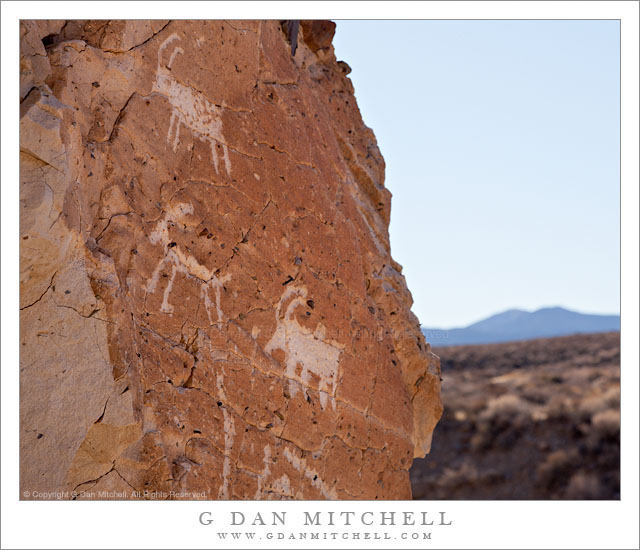Fractured Sandstone Cliff, Plants. Zion National Park, Utah. April 4, 2012. © Copyright 2012 G Dan Mitchell – all rights reserved.
Plants grow among cracks of a fractured sandstone cliff, Zion National Park.
On my first morning in Zion (we had arrived there the previous afternoon) we headed up into the park and Zion Canyon, though which the Virgin River flows. Although I was more or less not looking for icons to photograph, I had stopped along the way to photograph that icon, the view of the Watchman from the bridge on the Mt. Carmel highway. (At least I could console myself that I was not shooting it at the usual sunset time, but instead in the early morning. ;-) After a brief stop for that purpose, I headed up the canyon with a plan of visiting the Weeping Rocks and seeing what sort of photographs might be possible there.
After a short walk up to the rocks, I figured out that it wasn’t going to quite be my photographic “cup of tea.” However, along this walk I did find some other interesting subjects. One that I’ve shared previously was a very close view of some brand new spring leaves on the trees that grow along the trail. Another subject was the nearby sandstone cliffs that here come down close to the level of the trail. One area nearby featured immense vertical blocks of the striking red sandstone, with interesting crack systems and some plants growing in the cracks. I made several exposures of this area in full shade, and this vertical composition is one that I like a lot. I’ve probably said this before and I’ll no doubt mention it again, but for a guy who is so used to shooting the equally impressive but much less colorful granite of the Sierra, the colors of these rocks proved irresistible! And the color variations are amazing – here you can see some areas where the color trends toward purple.
G Dan Mitchell is a California photographer whose subjects include the Pacific coast, redwood forests, central California oak/grasslands, the Sierra Nevada, California deserts, urban landscapes, night photography, and more.
Blog | About | Flickr | Twitter | Facebook | Google+ | 500px.com | LinkedIn | Email
Text, photographs, and other media are © Copyright G Dan Mitchell (or others when indicated) and are not in the public domain and may not be used on websites, blogs, or in other media without advance permission from G Dan Mitchell.




